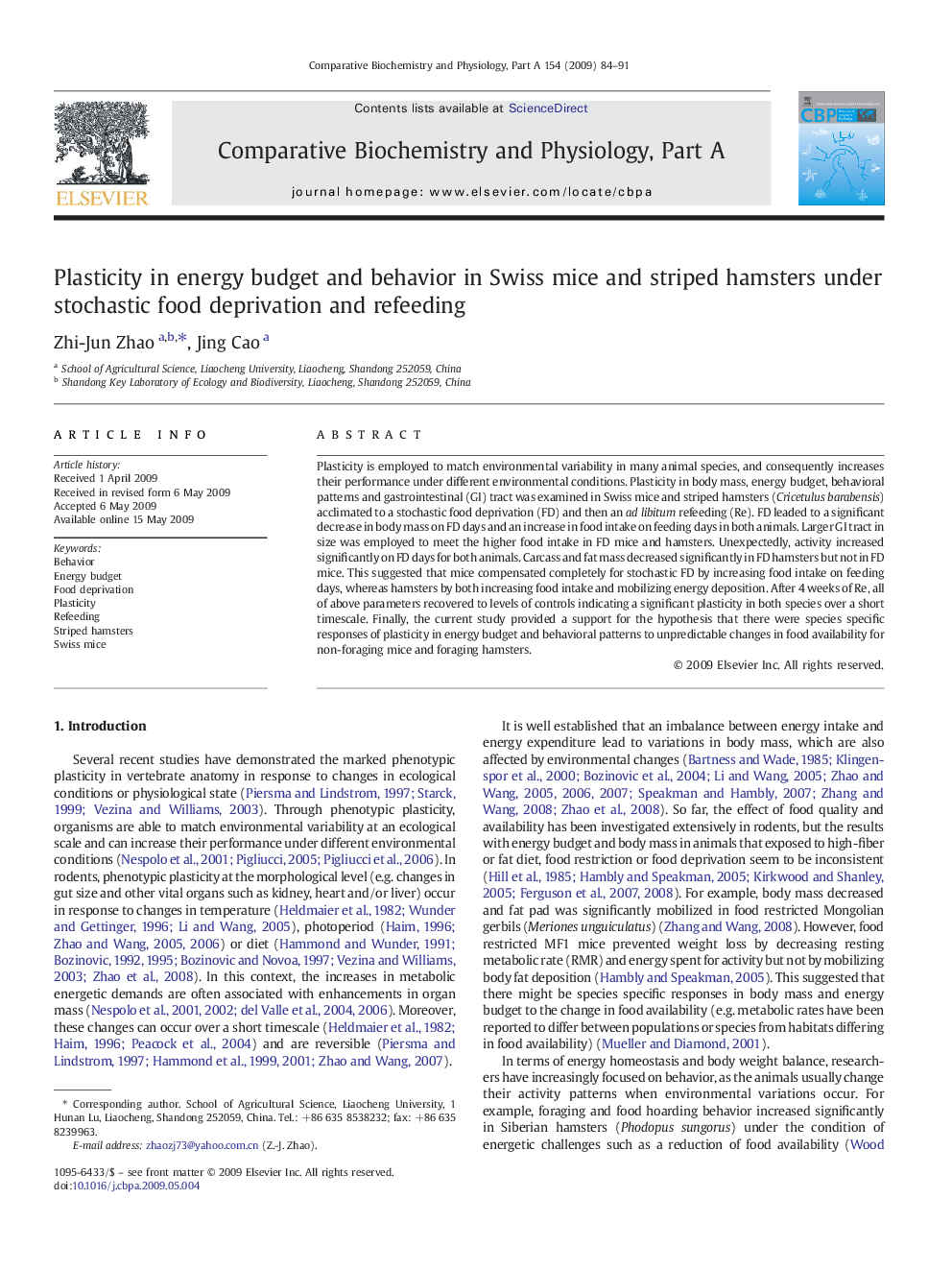| Article ID | Journal | Published Year | Pages | File Type |
|---|---|---|---|---|
| 1973428 | Comparative Biochemistry and Physiology Part A: Molecular & Integrative Physiology | 2009 | 8 Pages |
Plasticity is employed to match environmental variability in many animal species, and consequently increases their performance under different environmental conditions. Plasticity in body mass, energy budget, behavioral patterns and gastrointestinal (GI) tract was examined in Swiss mice and striped hamsters (Cricetulus barabensis) acclimated to a stochastic food deprivation (FD) and then an ad libitum refeeding (Re). FD leaded to a significant decrease in body mass on FD days and an increase in food intake on feeding days in both animals. Larger GI tract in size was employed to meet the higher food intake in FD mice and hamsters. Unexpectedly, activity increased significantly on FD days for both animals. Carcass and fat mass decreased significantly in FD hamsters but not in FD mice. This suggested that mice compensated completely for stochastic FD by increasing food intake on feeding days, whereas hamsters by both increasing food intake and mobilizing energy deposition. After 4 weeks of Re, all of above parameters recovered to levels of controls indicating a significant plasticity in both species over a short timescale. Finally, the current study provided a support for the hypothesis that there were species specific responses of plasticity in energy budget and behavioral patterns to unpredictable changes in food availability for non-foraging mice and foraging hamsters.
